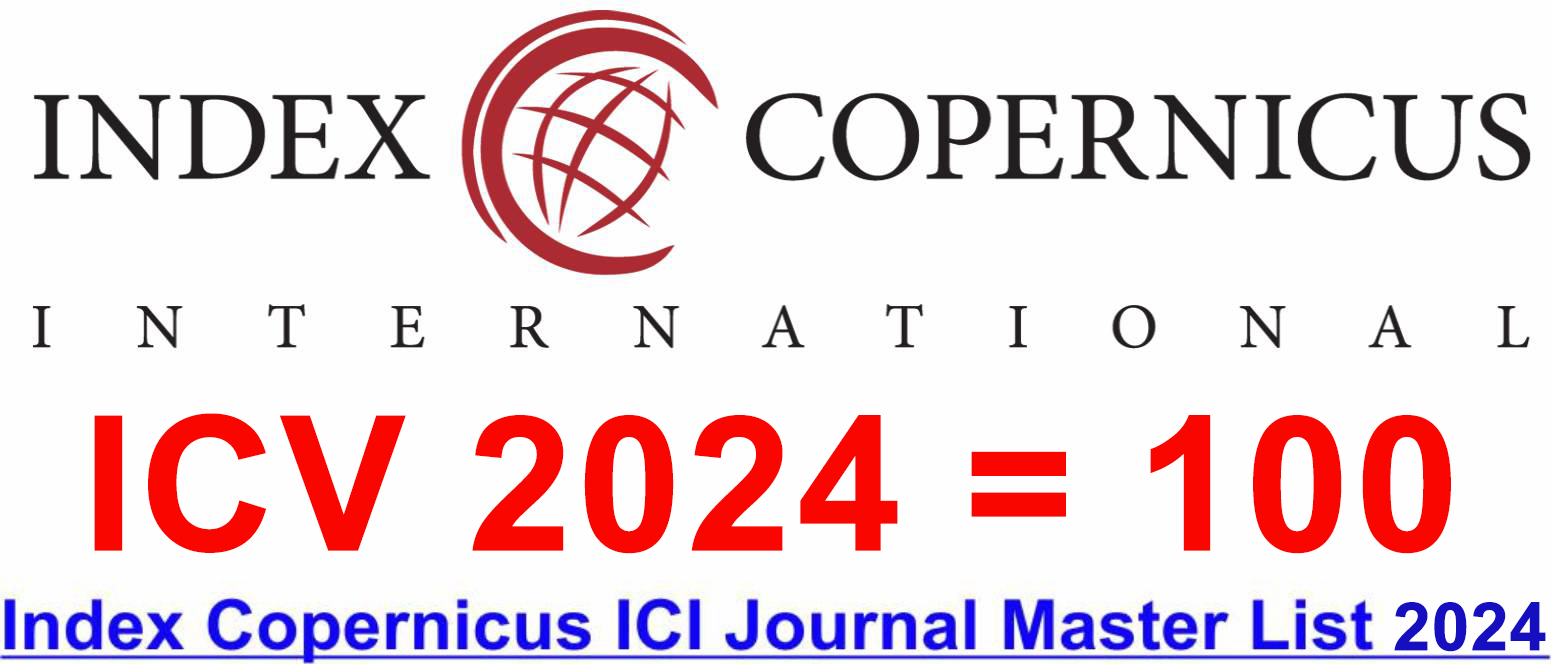HRM Practices and Operational Performance at Jute Spinning Mills in Bangladesh
DOI:
https://doi.org/10.46977/apjmt.2022v02i03.005Keywords:
Human Resource Management (HRM), Operational Performance, BJSAAbstract
This study is directed to concentrate on the practices of human resource management (HRM) in private enterprise as well as inspect the HRM practices affecting operational performance (non-financial). Survey questionnaire has been heading for collecting data from 120 staffs based on Random Sampling Technique working in three organizations to be specific Rahman Jute Spinners (Pvt.) Ltd., Jamuna Jute Industries Ltd. and North Bengal Golden Fiber & Diversified Jute Mills which are working under Bangladesh Jute Spinners Association (BJSA). Correlation Test, ANOVA Test and Regression Coefficient Test were done to bring out the outcomes of the study. The results uncovered that, noteworthy and satisfactory relationship exists among HRM functions (namely practices of recruitment and selection, assessment of performance, compensation and reward, training and development) and performance of operations. This study gives insight in terms of ensuring sustainable operational performance by practice these HRM practices which will ultimately accelerate the productivity of employees as well as private jute mills in Bangladesh.
Downloads
References
Abdul Rashid, M. A., Othman, M. N., Othman, M. Z., & Fatini, N. (2016). The Influence of the Types of Compensation (Financial and Non-Financial) on Job Performance Among Employees at the Employees’ Provident Fund (EPF) in Kuala Terengganu, Terengganu, Malaysia. Global Journal of Business and Social Science Review, 4(1), 24-30.
Ahmad, S., & Schroeder, R. G. (2003). The impact of human resource management practices on operational performance: recognizing country and industry differences. Journal of Operations Management, 21(1), 19-43. https://doi.org/10.1016/S0272-6963(02)00056-6
Akinbowale, M. A., Jinabhai, D. C., & Lourens, M. E. (2013). The impact of performance appraisal policy on employee performance–A case study of Guaranty Trust Bank in Nigeria. Mediterranean Journal of Social Sciences, 4(14), 677.https://doi.org/10.5901/MJSS.2013.V4N14P677
Armstrong, M. (2006). A Handbook of Human Resource Management Practice. Kogan Page Publishers.
Bartel, A. P. (2000). Human resource management and performance in the service sector: the case of bank branches. National Bureau of Economic Research (NBER), Working Paper. 7467. https://doi.org/10.3386/w7467
Batt, R. (2002). Managing customer services: Human resource practices, quit rates, and sales growth. Academy of Management Journal, 45(3), 587-597. https://psycnet.apa.org/doi/10.2307/3069383
Becker, B. E., & Huselid, M. A. (2006). Strategic human resources management: where do we go from here?. Journal of Management, 32(6), 898-925. https://doi.org/10.1177%2F0149206306293668
Björkman, I., & Xiucheng, F. (2002). Human resource management and the performance of Western firms in China. International Journal of Human Resource Management, 13(6), 853-864. http://dx.doi.org/10.1080/09585190210134246
Gallos, J. V., & Bolman, L. G. (2021). Reframing Academic Leadership. John wiley & sons.
Boohene, R., & Asuinura, E. L. (2011). The effect of human resource management practices on corporate performance: A study of graphic communications group limited. International Business Research, 4(1), 266-272. http://dx.doi.org/10.5539/ibr.v4n1p266
Boselie, P., Paauwe, J., & Jansen, P. (2001). Human resource management and performance: lessons from the Netherlands. International Journal of Human Resource Management, 12(7), 1107-1125. https://doi.org/10.1080/09585190110068331
Bowen, D. E., & Ostroff, C. (2004). Understanding HRM–firm performance linkages: The role of the “strength” of the HRM system. Academy of Management Review, 29(2), 203-221. http://dx.doi.org/10.5465/AMR.2004.12736076
Carraher, S. M., Gibson, J. W., & Buckley, M. R. (2006). Compensation satisfaction in the Baltics and the USA. Baltic Journal of Management. https://doi.org/10.1108/17465260610640840
Castilla, E. J. (2005). Social networks and employee performance in a call center. American Journal of Sociology, 110(5), 1243-1283. https://psycnet.apa.org/doi/10.1086/427319
Chan, S. (2005). Relationship between HRM practices and the perception of organizational performance, roles of management style, social capital, and culture: comparison between manufacturing firms in Cambodia and Taiwan. National Cheng Kung University, 1-181.
Chang, S., Gong, Y., & Shum, C. (2011). Promoting innovation in hospitality companies through human resource management practices. International Journal of Hospitality Management, 30(4), 812-818. https://doi.org/10.1016/j.ijhm.2011.01.001
Chiu, R. K., Luk, V. W. M., & Tang, T. L. P. (2002). Retaining and motivating employees: Compensation preferences in Hong Kong and China. Personnel Review, 31(4), 402-431. http://dx.doi.org/10.1108/00483480210430346
Chuang, C. H., & Liao, H. U. I. (2010). Strategic human resource management in service context: Taking care of business by taking care of employees and customers. Personnel Psychology, 63(1), 153-196. https://doi.org/10.1111/j.1744-6570.2009.01165.x
Collins, C. J., Ericksen, J., & Allen, M. (2005). Employee outcomes: human resource management practices and firm performance in small businesses.
Collins, C. J., & Clark, K. D. (2003). Strategic human resource practices, top management team social networks, and firm performance: The role of human resource practices in creating organizational competitive advantage. Academy of Management Journal, 46(6), 740-751. http://dx.doi.org/10.2307/30040665
Cotter, J. F., & Zenner, M. (1994). How managerial wealth affects the tender offer process. Journal of Financial Economics, 35(1), 63-97. https://doi.org/10.1016/0304-405X(94)90018-3
Delaney, J. T., & Huselid, M. A. (1996). The impact of human resource management practices on perceptions of organizational performance. Academy of Management Journal, 39(4), 949-969. http://dx.doi.org/10.2307/256718
Dyer, L., & Reeves, T. (1995). Human resource strategies and firm performance: what do we know and where do we need to go?. International Journal of Human Resource Management, 6(3), 656-670. https://doi.org/10.1080/09585199500000041
Fey, C. F., Björkman, I., & Pavlovskaya, A. (2000). The effect of human resource management practices on firm performance in Russia. International Journal of Human Resource Management, 11(1), 1-18. https://doi.org/10.1080/095851900339963
Galanou, E., & Priporas, C. V. (2009). A model for evaluating the effectiveness of middle managers' training courses: evidence from a major banking organization in Greece. International Journal of Training and Development, 13(4), 221-246. https://doi.org/10.1111/j.1468-2419.2009.00329.x
Gamage, A. S. (2014). Recruitment and selection practices in manufacturing SMEs in Japan: An analysis of the link with business performance. Ruhuna Journal of Management and Finance, 1(1), 37-52.
Ghebregiorgis, F., & Karsten, L. (2007). Employee reactions to human resource management and performance in a developing country: Evidence from Eritrea. Personnel Review, 36(5), 722-738. https://doi.org/10.1108/00483480710774016
Gong, Y., Law, K. S., Chang, S., & Xin, K. R. (2009). Human resources management and firm performance: The differential role of managerial affective and continuance commitment. Journal of Applied Psychology, 94(1), 263. https://psycnet.apa.org/doi/10.1037/a0013116
Hajer, M. A., & Yusof, Z. M. (2013). Building Self-confidence and Self-efficacy among Employees in the Iraqis Small and Medium Enterprises (SMES) Based on Business Process Reengineering (BPR) Tools: A Proposal New BPR Model. Management, 3(1), 45-49. https://doi.org/ 10.5923/j.mm.20130301.09
Harel, G. H., & Tzafrir, S. S. (1999). The effect of human resource management practices on the perceptions of organizational and market performance of the firm. Human Resource Management: Published in Cooperation with the School of Business Administration, The University of Michigan and in alliance with the Society of Human Resources Management, 38(3), 185-199.
Huselid, M. A. (1995). The impact of human resource management practices on turnover, productivity, and corporate financial performance. Academy of Management Journal, 38(3), 635-672. https://doi.org/10.5465/256741
Jalil, M. A., Shaikh, M. A. H., & Alam, M. J. (2014). Human resource management practices and operational performance: an empirical study on kushtia sugar mills ltd. Human Resource Management, 5(1).
Khan, M. A. (2010). Effects of human resource management practices on organizational performance–an empirical study of oil and gas industry in Pakistan. European Journal of Economics, Finance and Administrative Sciences, 24(157-174), 6.
Kundu, S. C., & Malhan, D. (2007). Human resource management practices in insurance companies operating in India: A Study. In Proceedings of the 13th Asia Pacific Management Conference, Melbourne, Australia (pp. 472-488).
Kuo, H. P. (2004). The relationship between Human Resource Management practices, employee commitment, and operational performance in the healthcare institutions. National Cheng Kung University.
Lee, F. H., & Lee, F. Z. (2007). The relationships between HRM practices, Leadership style, competitive strategy and business performance in Taiwanese steel industry. In Proceedings of the 13th Asia Pacific Management Conference, Melbourne, Australia (Vol. 2007, pp. 953-971).
Longenecker, C. O. (2010). Barriers to managerial learning: lessons for rapidly changing organizations. Development and Learning in Organizations: An International Journal. http://dx.doi.org/10.1108/14777281011069763
MacDuffie, J. P. (1995). Human resource bundles and manufacturing performance: Organizational logic and flexible production systems in the world auto industry. ilr Review, 48(2), 197-221. https://doi.org/10.1177%2F001979399504800201
Noe, R., Hollenbeck, J. R., Gerhart, B., & Wright, P. M. (2007). Fundamentals of Human Resource Management (2nd ed.). McGraw Hill, New York City.
Pfeffer, J. (1994). Competitive advantage through people: Unleashing the power of the work force (No. 04; e-book.). https://doi.org/10.1002/hrdq.3920070210
Phillips, E. (2009). The effect of tenure on teacher performance in secondary education.
Qureshi, M. O., & Sajjad, S. R. (2015). An Empirical Analysis of the Impact of Compensation on Job Performance and Work-Family Conflict in the Kingdom of Saudi Arabia a Correlation Model. European Scientific Journal February 2015 Edition, 11(4), 170-187.
Qureshi, M. T., Ramay, I. M., & Marwat, Z. A. (2006). Impact of human resource management practices on organizational performance in Pakistan. Muhammad Ali Jinnah University Islamabad, 1(3), 45-67.
Schuler, R. S., & Jackson, S. E. (1987). Linking competitive strategies with human resource management practices. Academy of Management Perspectives, 1(3), 207-219. https://doi.org/10.5465/ame.1987.4275740
Singh, K. (2004). Impact of HR practices on perceived firm performance in India. Asia Pacific Journal of Human Resources, 42(3), 301-317. http://dx.doi.org/10.1177/1038411104048170
Sopiah, S. (2013). The effect of compensation toward job satisfaction and job performance of outsourcing employees of Syariah banks in Malang, Indonesia. International Journal of Learning & Development, 3(2), 77-91. https://doi.org/10.5296/ijld.v3i2.3612
Syed, Z. J. W., & Jamal, W. (2012). Universalistic perspective of HRM and organizational performance: meta-analytical study. International Bulletin of Business Administration, 13(4), 45-57.
Tsaur, S. H., & Lin, Y. C. (2004). Promoting service quality in tourist hotels: the role of HRM practices and service behavior. Tourism Management, 25(4), 471-481. https://doi.org/10.1016/S0261-5177(03)00117-1
Tiwari, P., & Saxena, K. (2012). Human resource management practices: A comprehensive review. Pakistan Business Review, 9(2), 669-705.
Trehan, S., & Setia, K. (2014). Human resource management practices and organizational performance: an Indian perspective. Global Journal of Finance and Management, 6(8), 789-796.
Tzafrir, S. S. (2005). The relationship between trust, HRM practices and firm performance. The International Journal of Human Resource Management, 16(9), 1600-1622. http://dx.doi.org/10.1080/09585190500239135
Walker, R. M., Damanpour, F., & Devece, C. A. (2011). Management innovation and organizational performance: The mediating effect of performance management. Journal of Public Administration Research and Theory, 21(2), 367-386. https://doi.org/10.1093/jopart/muq043
Published
How to Cite
Issue
Section
Copyright (c) 2021 Asia-Pacific Journal of Management and Technology (AJMT)

This work is licensed under a Creative Commons Attribution-NonCommercial 4.0 International License.
















